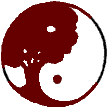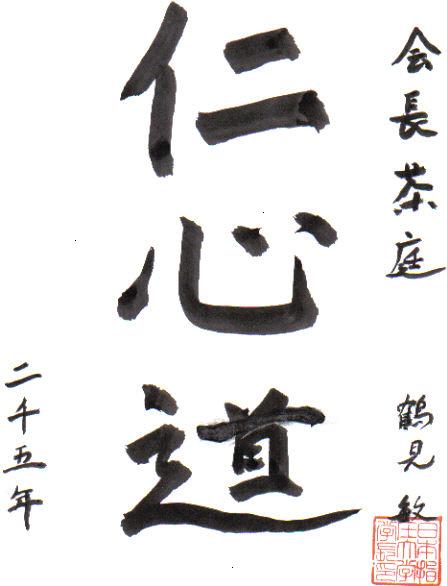|
|

 Jin Shin Do® Acupressure — Magic or Science?By Iona Marsaa Teeguarden, M.A., L.M.F.T., Dipl. ABT, from the Jin Shin Do®: Foundation for Bodymind Acupressure® Sometimes, Jin Shin Do® Bodymind Acupressure® seems like magic. . .
In his course “Chinese Medical Philosophy,” in 1971, Dr. Kok Yuen Leung said that research had shown a marked lowering of electrical resistance in the skin along the paths of the meridians. Japanese acupuncturists had used electronic equipment to trace the meridians and to find “'points of blockage,' which show up as minute areas of intense micro-electrical conductivity. These points invariably coincide with the traditional acupuncture points.” In 1976 in Tokyo, I was fortunate to meet Katsusuke Serizawa, M.D.,2 who kindly shared reports of scientific research that he and colleagues in the department of physical therapy and medicine at the University of Tokyo had done since 1964. One study indicated that the traditional points, or “keiketsu,” which generally exhibit tenderness, normally have a skin temperature 0.1 to 0.6 degrees Celsius higher than the surrounding area.3 Another study said that these “electrodermal points or reflex points” are localized skin areas of about 0.5 x 0.5 mm., which have a markedly decreased electrical resistance—about 1/100 of the surrounding area.4 This is the same as saying that the electrical conductivity at these points is 100 times greater than that of the surrounding area! Japanese research also suggested that the meridians are located in interfascial spaces—between the fibrous membranes which support and separate the muscles and organs. In 1964, Rokuro Fujita, M.D. concluded: “Each meridian in nature consists of interfascial space, wherein exist blood-lymph vessels and nerve trunks at a depth specific to itself.” In general, “some meridians have more extravascular connective tissue, and others more extranervous connective tissue.” 5 How does the Qi move along these meridians or interfascial spaces? Japanese researchers hypothesized that the meridians are stimulated by muscular movement, or the "serial contraction" of related muscles. Not only physical movement, but also the flow of emotions, causes functionally-related muscles to contract. Therefore, both physical and psychological movement stimulates the flow of Qi. It was in 1952 that Rokuro Fujita, M.D. made studies of the electrical reactivity of the points and the appearance of “papules” after moxa (heat) stimulation, and concluded that the main cause of meridian phenomena is “the transmission of changes based on the serial contraction of systematical muscles connected kinetodyamically.” 6 Before we explore some exciting recent American research on the meridians, here are basic definitions: Faschia: a thin layer of connective tissue covering, supporting or connecting muscles or inner organs. This connective tissue enfolds and enmeshes every structure and organ. Myofascia: muscle (myo) & fascia combined. The metaphor of myofascial “tracks” (described in Anatomy Trains 7 ) helps us to visualize the vertical, horizontal and spiral ways that the fascia runs. Authorized JSD Teacher Evan McCormick of L.A. says, “Many of the basic JSD points correspond to key junctions where bone, muscle and fascia overlap; and the Strange Flows are in the path of myofascial ‘tracks.’ This helps explain why releasing a JSD point not only relaxes the local tension, but also releases other muscles—those that contribute to the tension through fascial connections. Release of the local point stimulates a spontaneous reorganization along the myofascial ‘track.’ “To use another metaphor, the local point acts like a tuning fork. It is as though all the fascia that relate to that local point organize themselves around its frequency.” 8 B.C. acupuncturist Arnie Lade writes about the meridians and the faschia in his book, Energetic Healing: Embracing the Life Force. Arnie says that, while he perceives “the meridians as being subtle structures in nature,” there appears to be “a physical medium through which they operate,” which likely is “the body’s fascial system.” 9 “Fascia is composed primarily of collagenous and elastic fibers within a colloidal or glue-like ground substance,” Arnie explains. “Collagen fibers are highly pliable and tough, and form the bulk of the faschia, while elastic fibers are stretchable, giving fascia greater flexibility. The majority of fascial fibers in the body orient themselves in a longitudinal direction” 9 [as do the majority of the Meridians]. Arnie expands on the idea that the faschia is “the conduit for meridian Qi,” giving two main reasons why the fascial system might be the physical medium through which the meridians operate:
2) The fascia is “highly responsive to electrical and magnetic influences.” It is “a sensitive biological amplifier of subtle external forces,” such as changes in weather and seasonal changes. “Fascia allows for an amazing amount of responsiveness because of its mobility and elasticity,” so that “via the fascia, pain, tension and stress are easily diffused and rapidly communicated throughout the whole body.” 9 “Although the fascia is a continuous network, three types of fascia are differentiated: superficial, deep, and visceral.” Superficial fascia “lies beneath the skin” and helps maintain body heat and protect against trauma. Deep fascia “covers and holds muscles, tendons and ligaments together, as well as separating them into functional units.” Visceral fascia “envelops and supports the internal organs” and stabilizes them structurally, by anchoring them.9 “According to my clinical investigation, the classical routes associated with the meridian system utilize and follow the body’s faschia,” says Arnie. “The superficial fascia corresponds to the meridian’s exterior pathways and the deep and visceral faschial layers to its internal pathways.” 9 Fascinating research along these lines has recently been done by Helene M. Langevin and colleagues at the University of Vermont.10 They start from traditional beliefs that Meridians connect the surface of the body to internal organs and are channels through which Qi flows. They say, “the anatomical correspondence of acupuncture points and meridians to connective tissue planes in the arm suggests plausible physiological explanations for several important traditional Chinese medicine concepts.” 10 Here are some of their “proposed anatomical/physiological equivalents” of key concepts of traditional acupuncture/acupressure theory:
Langevin and her colleagues have begun to provide experimental evidence supporting the correspondence between the meridians and the faschia. Their hypothesis is: “The network of acupuncture points and meridians can be viewed as a representation of the network formed by interstitial connective tissue.” They say “this hypothesis is supported by ultrasound images showing connective tissue cleavage planes at acupuncture points in normal human subjects.” Also, they found an 80% correspondence between the sites of 24 acupuncture points on the human arm and the location of intermuscular or intramuscular connective tissue planes (in postmortem tissue sections). 10 They note that the same description fits both “meridians” and fascia or “interstitial connective tissue.” Both “form a network throughout the body, connecting peripheral tissues to each other and to central viscera.” Interstitial connective tissue “constitutes a continuous network enveloping all limb muscles, bones, and tendons, extending into connective tissue planes of pelvic and shoulder girdles, abdominal and chest walls, neck, and head.” Therefore, “a form of signaling (mechanical, bioelectrical, and/or biochemical) transmitted through interstitial connective tissue . . . may have potentially powerful integrative functions. . .” 10 They say: “A mechanism initially involving signal transduction through connective tissue, with secondary involvement of other systems including the nervous system, is potentially closer to traditional Chinese acupuncture theory, yet also compatible with previously proposed neurophysiological mechanisms.” This physiological model may be the first to satisfactorily explain why stimulation of an acu-point has effects on other body parts.10 I generally explain the interconnection of the points in a simpler way. Sometimes clients ask, "Why are you holding points on my foot when it is my neck that hurts?" I often reply, “Well, it’s because the hip bone’s connected to the thigh bone, and the thigh bone’s connected to the knee bone, and the knee bone’s connected to the leg bone...” Usually they say “Oh!” before I get to sing: "and the leg bone's connected to the ankle bone, and the ankle bone's connected to the foot bone..." 1 Ted Kaptchuk, O.M.D., The Web that has no Weaver: Understanding Chinese Medicine, 1983, Congdon & Weed, NY, p. 77, 108. 2 Katsusuke Serizawa, M.D. is author of Massage: the Oriental Method, 1972 and Tsubo: Vital Points for Oriental Therapy, 1976, both published by Japan Publications, Tokyo. 3 “Studies on Clinical Scientific Approach in Acupuncture and Moxibustion Treatment,” by Katsusuke Serizawa, M.D.; Dpt. of Physical Therapy & Medicine, School of Medicine, University of Tokyo; and Institute of Physical Therapeutics, Tokyo U. of Education; 1966. 4 “Individual Pattern Changes in the Distribution of Skin Temperature, Electric Resistance, and Potential Difference, by Yoshio Oshima, Kosei Takahashi, Katsusuke Serizawa, Toshimori Fujita, Toshio Kubota, and Kazu Mori; Dpt. Of Physical Therapy & Medicine, School of Medicine, University of Tokyo & Institute of Physical Therapeutics, Tokyo University of Education; abstract read at 4th. International Congress of Physical Medicine in Paris, 1964. 5 “Experimental Study on the Main Meridian Line,” by Rokuro Fujita, M.D., The Japan Society for Oriental Medicine in Japan, July 14, 1964. 6 “Study on Meridians,” 1st. and 2nd. Reports, abstract of paper presented by Rokuro Fujita, M.D., at the Japan Society for Oriental Medicine in Japan, 1952. 7 See Anatomy Trains, by Thomas W. Myers, 2001, Churchill Livingstone, pp. 51-60. To order: www.AnatomyTrains.net • 1-888-546-3747. 8 “Extraordinary Energy Flows” by Iona Marsaa Teeguarden, 2003 Acupressure News, JSDF. 9 Energetic Healing: Embracing the Life Force, by Arnie Lade, ISBN 0-914955-46-2 1998, Lotus Press (P.O. Box 325, Twin Lakes, WI 53181), p. 145-150, (also available in German and Portuguese). Arnie kindly includes exercises (some traditional, some new) to help you experience, and get a body sense of, the life force or Qi. 10 Helene M. Langevin and Jason A. Yandow, “Relationship of acupuncture points and meridians to connective tissue planes.” (See www.somatics.de and then click on: “Articles,” “For Professionals,” & “Of General Interest for Somatic Practitioners.”) Ms. Langevin says that pubmed.org lists her papers right away. Correspondence to Helene M. Langevin: hlangevi@zoo.uvm.edu - Fax: 802-656-8704; Given C 423, Dpt. of Neurology, University of Vermont College of Medicine, Burlington, VT 05405. 11 Matsumoto K, Birch S. 1988. Hara diagnosis: Reflections of the sea. Brookline: Paradigm Publications. All rights reserved.
|
||
